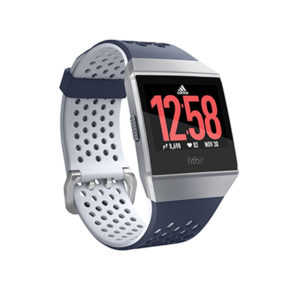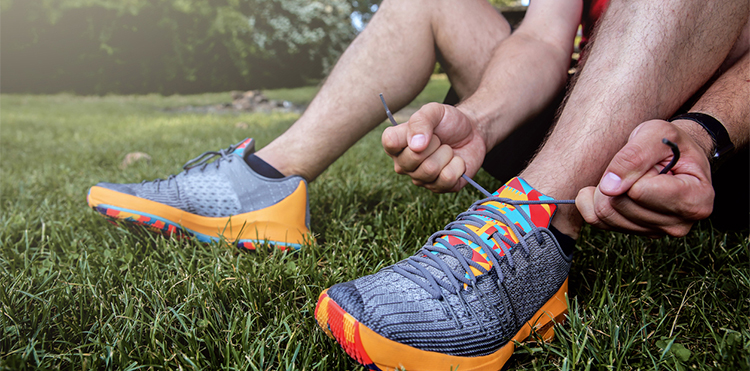Being injured and unable to run is incredibly frustrating. Not only are you robbed of the activity you love, you also know that your hard-earned fitness is diminishing with every passing day. It’s a difficult time, physically and mentally, and can set your running back weeks, months, or even years. But what if we told you it doesn’t have to be this way? What if we said you could maintain your cardiovascular fitness, without putting any strain on your injury? Sounds too good to be true, doesn’t it? But it’s not.
Have you ever noticed the way top athletes seem to come back from injury fitter and faster than ever before? This isn’t the result of natural talent; it’s because, rather than sitting on the sofa watching Time Team and feeling sorry for themselves, they’re striving to do absolutely anything they can to ensure that they not only overcome the injury as quickly as possible, but also that they are in the best shape possible when they are ready to run again. The time they spend using bikes, cross-trainers, and the pool for swimming and aqua jogging can actually make them a better athlete than they were before the injury. The extra strength and muscular endurance gained through these weeks of intensive cross training can create a better athlete.
If you are injured and unable to run, cross training is a great way to maintain your cardiovascular fitness – after all, your heart doesn’t know the difference. Even if you are injury-free, cross training is a great addition to your training. The key thing is ensuring that you are training at the right intensity. Substituting a run for a session on the cross trainer or bike is absolutely fine, but only if the effort matches what’s stipulated on your training plan. For example, if your training plan says ‘5 x 5 minutes @ threshold intensity, with 90 secs recovery between intervals’, recreate this session as closely as possible on the bike or cross trainer. Warm up as you would on your run, with an easy five to ten minutes, then adjust the resistance and/or increase the speed to achieve threshold level.
Here are our top six cardio cross training sessions for injured runners:
1. Cycling – The progression ride
Aim to ride the static bike at the gym or a turbo trainer and build the effort over a 45-60 min period. This could be 20 mins easy, 20 mins steady effort (7-8 out of 10) then it’s head down and time to bury yourself with 20 mins of either threshold intensity or time trialing.
2. Indoor Rowing – The short interval session
Warm up well, then its time for repeats of 1 min hard/1 min easy continuously. Build up as necessary, but aim to reach 10 hard efforts eventually, covering the same distance in each one. This feels like running 10 x 400metres off a 1 min jog recovery if you work hard enough.
3. Aqua Jogging – The threshold/interval mixer
Put the Aqua belt on and enter the deep end having warmed up. Now complete 3 mins @ threshold with a 30-60 second recovery paddle before adding 5 x 30 seconds fast sprint off 30 sec recovery paddle. Repeat the threshold and 30 secs sprints x 3 – 5 sets.
4. Cross trainer/Elliptical trainer – The threshold block session
A simple one to execute but keep focused. Warm up then 5 x 5-6 mins of hard threshold intensity effort off 1 min easy recovery. Sweat like a trooper in this and achieve threshold by either increasing resistance or speed.
5. The non-running Fartlek
Just because you’re not running, it doesn’t mean no speed work. You can do it aqua jogging, on the bike, cross trainer, or rowing. Simply warm up and then try 3 sets of 3 mins @ threshold (1 min easy recovery), 2 mins @ just harder than threshold (1 min easy recovery) and 1 min fast/super hard. Repeat each set 3 times, keeping to 1 min recovery.
Keep in Mind
As ever, it’s vital that you are honest with yourself about your effort level and about how you feel. Threshold level when you are running means three or four-word answer pace (you should be able to say three or four words between breaths, but not a whole sentence), so threshold when you are cross training should be exactly the same. Follow the session detailed on your training plan, including the warm down, and voila – you have achieved the same fitness benefit without harming your injury.
If your plan has you down to do an endurance long run, you can recreate this on the bike, or, if in the gym, on a combination of different cardio machinery. Keep the intensity to 7/10 and maybe work for 10-20 mins on the bike before switching to the cross trainer and then progressing to the rower and so on. You could even finish with a swim and suddenly 60-80 mins have passed. 30-45mins at an easy effort, with some strength and conditioning or core work afterwards is another fabulous session. A great impact-free day and good replacement for a recovery run. You have to remember that your heart really doesn’t know the difference between going for a run, using the bike or rower.
The reality is it works as hard as you ask it to; it’s the legs that feel different. Most cross training is almost totally non-impact, which gives your body a chance to repair all those minor muscle tears, allows aching joints to recover and general soreness to be reduced.







